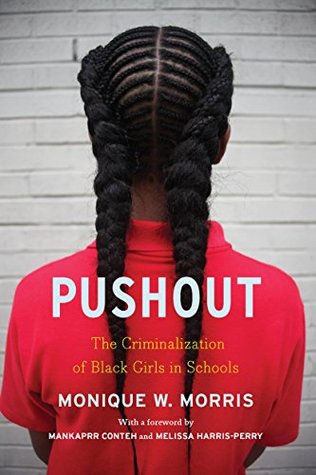More on this book
Community
Kindle Notes & Highlights
Read between
June 1 - June 26, 2020
When Black girl energy is uncontainable, we can jump up and dance with them. When the world is painful, we can scream with our girls, not at them. If the world weighs heavy on them, we can teach them to write, and we can sit and write with them. We can have longer conversations and longer tempers. We can let them lead and question and thrive. As educators, there will be times we must push hard—push girls to fulfill their unique promise, their brilliance, and their capacity for greatness. But sometimes Black girls don’t need a push at all. Sometimes, as any educator who genuinely engages the
...more
Black girls are greatly affected by the stigma of having to participate in identity politics that marginalize them or place them into polarizing categories: they are either “good” girls or “ghetto” girls who behave in ways that exacerbate stereotypes about Black femininity, particularly those relating to socioeconomic status, crime, and punishment.28 When Black girls do engage in acts that are deemed “ghetto”—often a euphemism for actions that deviate from social norms tied to a narrow, White middle-class definition of femininity—they are frequently labeled as nonconforming and thereby
...more
casting them as social deviants rather than critical respondents to oppression
The question of survival among Black girls has always been about whether they are seen, and if so, how they are seen, particularly in economically and socially isolated spaces.
For Black girls, to be “ghetto” represents a certain resilience to how poverty has shaped racial and gender oppression. To be “loud” is a demand to be heard. To have an “attitude” is to reject a doctrine of invisibility and mistreatment. To be flamboyant—or “fabulous”—is to revise the idea that socioeconomic isolation is equated with not having access to materially desirable things. To be a ghetto Black girl, then, is to reinvent what it means to be Black, poor, and female.
when the way of the world includes a general lack of cultural competence and an aversion to valuing the unique considerations of gender, these survival characteristics are degraded and punished rather than recognized as tools of resilience.
Black girls in classrooms across the country have been granted permission to fail by the implicit biases of teachers that lower expectations for them.
curiosity and critical thinking are misconstrued as a challenge to authority.
The student-teacher relationship is a critical component of whether a girl’s comments will be seen as part of her expression and learning, or as a deliberate and willful affront to the teacher’s authority. Neither of these is against the law, by the way. Yet many schools punish girls who speak out of turn or challenge what they feel is injustice as if it were a violation of law rather than an interrogation of fairness.
schools with SROs record more crimes that involve weapon and drugs, but they also report more nonserious crimes to law enforcement—thereby expanding the reach of the criminal justice system, a practice that is referred to as “net-widening”:
The increased surveillance of Black youth in particular has led to increased contact with law enforcement, and in some cases, the juvenile court, for actions that would not otherwise be viewed as criminal,
The presence of law enforcement in schools has instead blurred lines between education and criminal justice, as daily exchanges and interactions with law enforcement expand the surveillance of youth of color and normalize prison terminology (and culture) in school settings.
Choosing a life on the street is ultimately about survival—and that’s what schools are up against. When girls in the sex trade are removed from school or sent the signal that their presence in school is problematic, they are being handed over to predators.
The Sexual Abuse to Prison Pipeline, highlighted the way in which girls, particularly girls of color, are criminalized as a result of their sexual and physical abuse.
social world reinforces the idea that they are their sexuality—rather than the idea that they own and control their sexuality.
“popularity” came with being subjected to ridicule and speculation by boys, other girls, and the many ways all children mimic the adult policing of girls’ sexuality.
Instead of focusing on developing a climate in which boys are taught not to touch girls’ bodies, girls are sent home to change their clothes.


